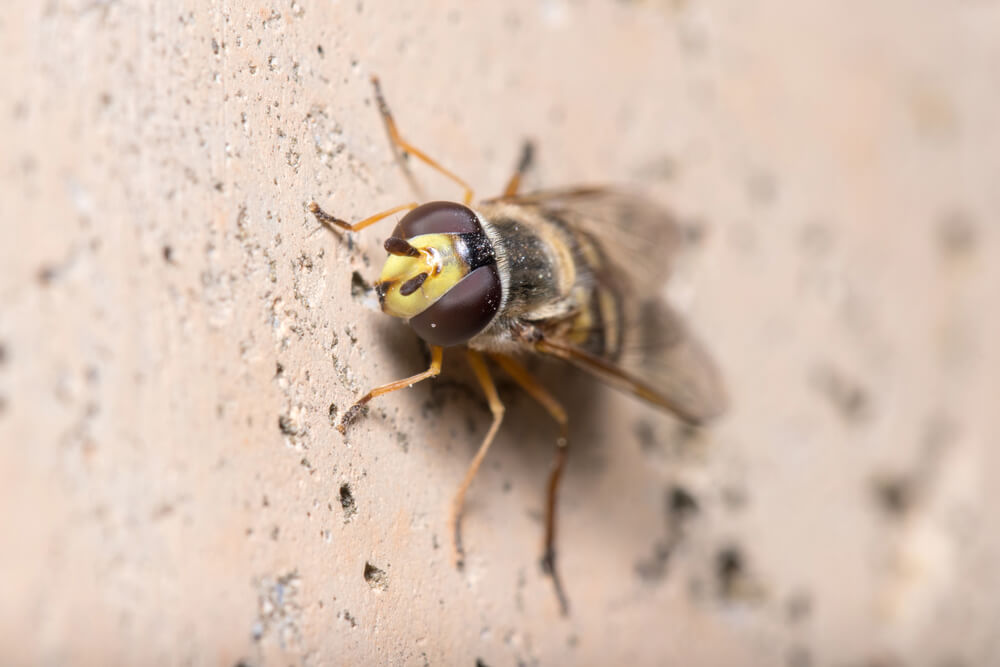Table of Contents:
Why Are Bees Hitting My Window?
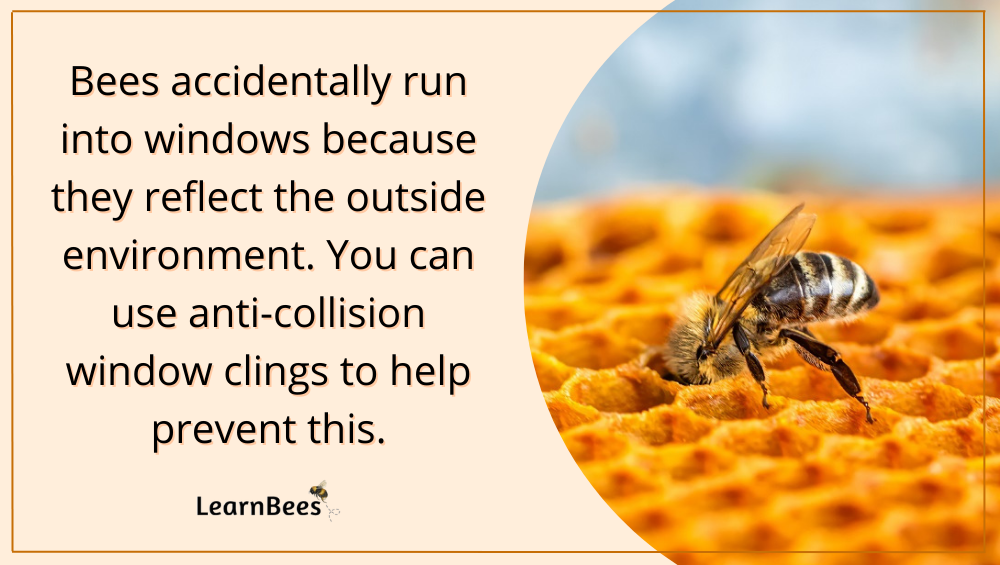
Bees typically hit windows because windows reflect the sky or outside environment, making them inviting places to fly into.
Birds and other insects also do this.
Animals can’t always perceive windows as barriers, so they’ll fly into them accidentally if the window reflects greenery or foliage. Unfortunately, window collisions can kill bees, birds, and other insects.
You can help prevent bees and other creatures from hitting your windows by using anti-collision window clings. These clings work well for breaking up the reflective pattern and alerting bees that windows aren’t safe places to fly into.
Remember:
Bees use light patterns in the sky to help navigate them. Large and reflective windows can disrupt their navigation abilities.(1, 2)
Additionally, bees nesting near windows may see their reflection inside the window and become territorial. However, this is rare since most bees hit windows by accident because they mistake them for the open environment.
In summary, use anti-collision window clings to prevent bees from hitting your window. Window clings also deter birds and other insects.
How Do You Get Rid of Bees in the Window?
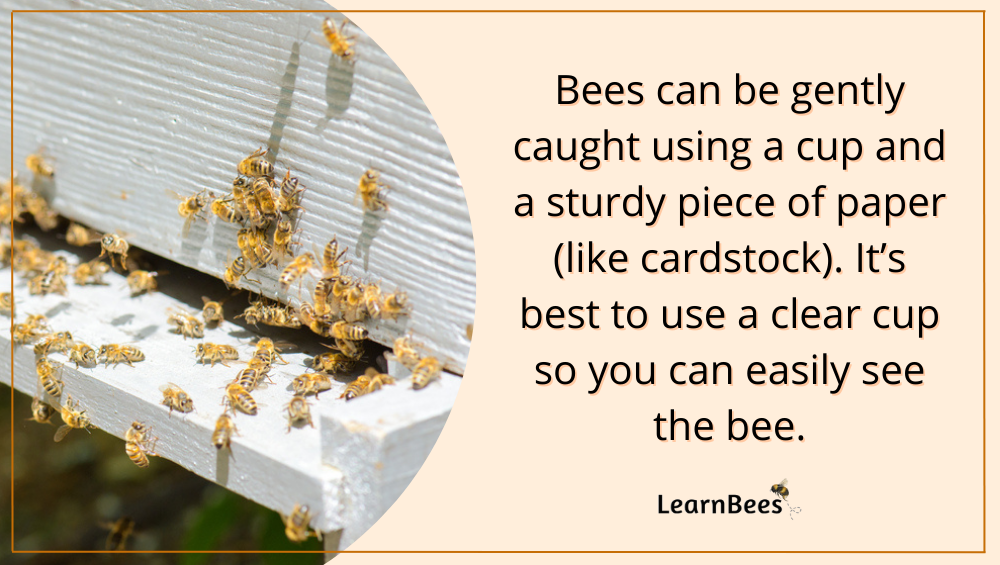
The best way to get rid of bees in the window is by gently trapping them using a cup and a piece of sturdy paper like cardstock.
Now here’s the thing:
Bees are generally passive creatures. They’re typically only territorial over their nest or if they feel directly threatened. If you’re careful, gently trapping and moving a bee outside should be quick and easy without the worry of getting stung.
Additionally, seeing one or two bees trapped inside your window sill is normal. It doesn’t necessarily mean that bees are nesting inside your home. Instead, bees often find their way inside through cracks and crevices. You can try to seal up any cracks around the exterior of your home or simply leave it alone if it doesn’t happen very often.
You can also deter bees and wasps using a deet-free insect repellent that repels bees naturally. It contains plant-based oils that insects dislike the scent of.
With that in mind, if you notice several bees inside your window regularly, it could be because the bees have nested inside your house.
But first, you need to determine if they’re actually bees.
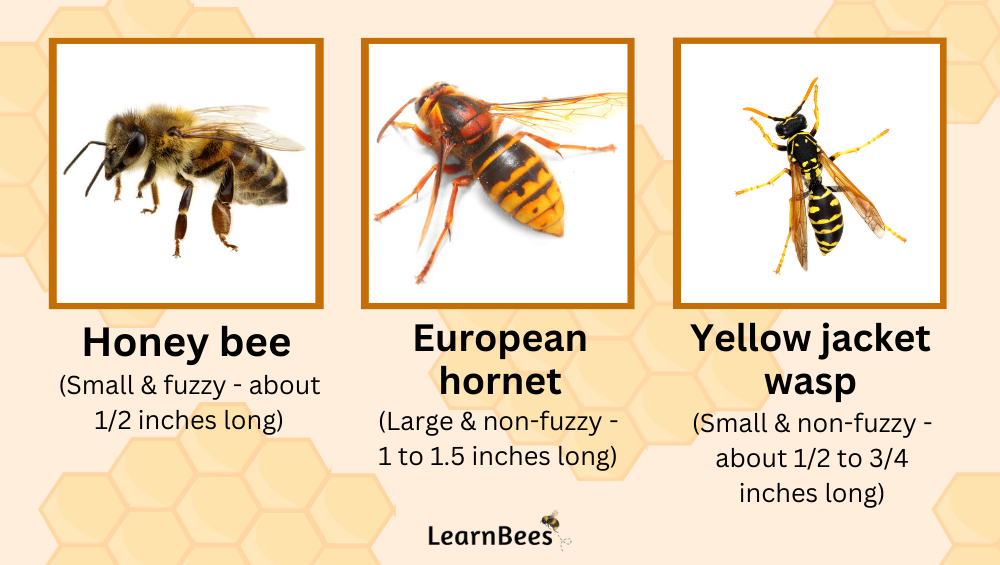
Many people mistake hornets and wasps for bees when they’re, in fact, not bees. For example, European hornets (Vespa crabro) are large wasps that sometimes nest inside homes. European hornets are often mistaken for honey bees because of their coloring and social behavior.(3)
However, hornets and bees aren’t the same.
The good news is that hornets and wasps only live during the warm months. As a result, you can seal off any cracks in your home exterior during the winter months to prevent future nests.(4, 5)
If you’re dealing with honey bees instead of wasps, you can call a local beekeeper to help remove the nest from your home. Beekeepers often perform bee removals for free because they get to keep the bees.
Additionally, contacting a beekeeper allows the honey bees to survive. This is important because bees are beneficial pollinators and keystone species in our ecosystems.
Now, you might be asking…
How do you find where the bees are coming from?
Tip 1: Check the fireplace for bees
If you notice bees inside a room with a fireplace, that could be the culprit. Bees sometimes make their way inside chimneys and build nests.
If you listen closely, you can often hear bees buzzing inside the fireplace. Start by turning off all electronics, fans, HVAC units, or anything that might muffle the buzzing noise. Then, sit near the chimney and listen closely for the buzz.
If you don’t hear anything, the next place to check is your vents.
Tip 2: Check the vents for bees
Again, turn off any sound distractions such as the HVAC unit, fan, or electronics. The buzzing sound from bees can be subtle, so your house needs to be completely quiet.
If you hear nothing, you need to step outside to check the parameters of your home.
Tip 3: Check your home exterior for bees
If possible, use a pair of binoculars as you scope outside your home. Keep an eye out for:
- Gaps, openings, or cracks in the exterior. Oftentimes, you may see bees hovering near the entrance of their nest or flying in and out.
- Attic ventilation openings. Such holes allow heat to escape from the attic and keep it from getting stuffy. Unfortunately, though, ventilation openings can enable bees to get in.
- Dryer, stove, or bathroom vents. These are easy places for bees to get into, so it’s always smart to check them. You may notice a bee or several near the vents—a key giveaway that they may be nesting inside.
- Chimney. Bees love to nest in high areas, so look at the top of the chimney for bee activity.
How Long Can a Bee Live Trapped in a Window?
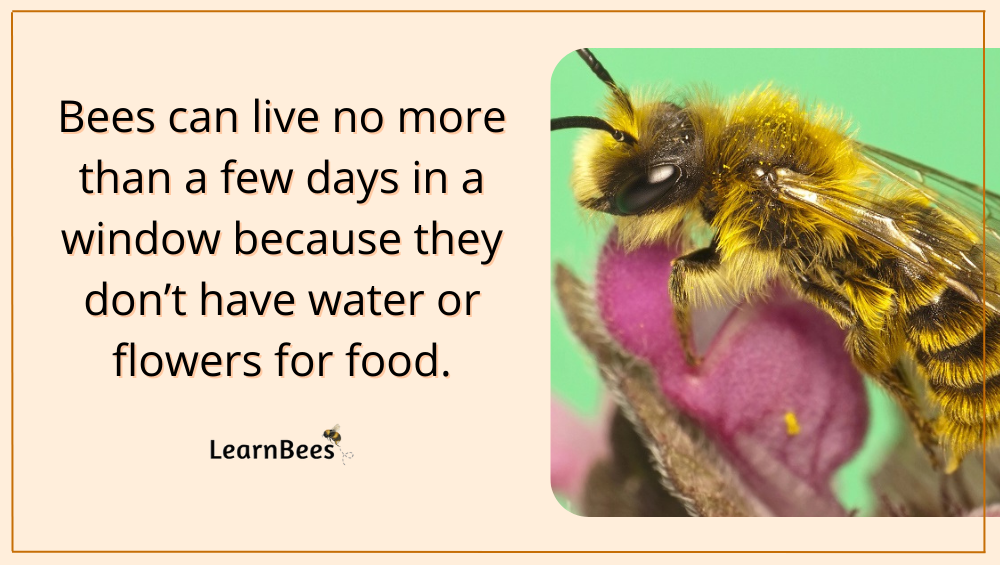
Bees can live only a couple of days trapped in a window. Bees need regular water and flowers to survive. Without it, they’ll appear lethargic when, in fact, they’re actually dying.
Keep in mind:
Bees are the unsung heroes of the insect world.
In other words, bees are crucial insects that pollinate many of our crops, including fruits, vegetables, and even coffee.(6, 7)
In fact, it’s estimated that bees pollinate one in every three bites of food we eat. They pollinate 80 percent of all flowering plants, including over 130 types of vegetables and fruits.(6, 7)
And despite popular belief?
Bees aren’t aggressive stinging insects that are out to harm you.
Yes, bees can sting. However, stinging typically occurs only when their nest is infringed upon or when someone is directly threatening the bee. This means bees are generally passive creatures that spend most of their time foraging on flowers for food.
As a result, we should avoid labeling bees as “aggressive” or “mean.” Bees don’t want to sting if they don’t have to, and this is especially true for honey bees, which die immediately after stinging.
So, with that in mind, the best thing to do is carefully and slowly remove the bee from the window using a cup and a piece of paper. Using a clear cup would be even better since it’ll allow you to see the bee inside it.
FAQs About Bees in Windows
- Why are there dead bees in my house by the window?
- How do you get rid of bees in the window?
- Why are there lethargic bees in my house?
- Why are bees on my window at night?
- Why are bees on my window screen?
- How do you encourage bees to leave?
- Will bees leave my house on their own?
- Can bees damage a house?
- How do you know if bees are in your walls?
Why are there dead bees in my house by the window?
Finding dead bees by your window could be because the bees accidentally hit the window, and it killed them on impact.
Finding dead bees inside the window sill means the bee got trapped inside and couldn’t figure out how to escape, so it died without water and flowers to forage on for food.
There is no cause for concern if you only see one or two bees inside or near the window. However, if you see multiple bees constantly coming around, it could mean you have a nest nearby or inside your home.
—> Go back to the FAQs on bees in windows
More to Explore:
How do you get rid of bees in the window?
You can get rid of bees in the window using a cup and a sturdy piece of paper, like cardstock. It’s best to use a glass or transparent cup to see through so you know that you’ve trapped the bee.
Start by placing the cup over the bee. Once the bee has walked onto the side of the cup, put the paper underneath to trap it and gently let the bee go outside.
—> Go back to the FAQs on bees in windows
More to Explore:
Why are there lethargic bees in my house?
Bees can appear lethargic inside your home when they’re dying because of a lack of food and water. Gently let the bee outside so it can get to safety.
—> Go back to the FAQs on bees in windows
More to Explore:
- What Are Blue Orchard Bees?
- The Fascinating Life of Queen Bees
- Queen Bee Versus Worker Bees – How Do They Compare?
Why are bees on my window at night?
Bees near your window at night typically mean there is a nest nearby. However, it doesn’t necessarily mean the bees are nesting inside your home. They could be nesting in a nearby tree or other area.
If you think the bees are nesting inside your home, follow the above steps to confirm.
—> Go back to the FAQs on bees in windows
More to Explore:
Why are bees on my window screen?
Bees and other insects may temporarily rest on your window screen. This is normal and not a cause for concern.
—> Go back to the FAQs on bees in windows
More to Explore:
How do you encourage bees to leave?
You can deter bees naturally by using a deet-free insect repellent that includes essential oils that they dislike the scent of.
—> Go back to the FAQs on bees in windows
More to Explore:
Will bees leave my house on their own?
Bees will typically not leave your house if they’re nesting inside it. They will overwinter there to stay warm. To save the bees, you’ll have to contact a local beekeeper.
On the other hand, wasps and hornets die off during the winter. So, if you’re dealing with a wasp nest, you can rest assured they’ll be gone once it gets cold as long as you don’t live in a warm climate without true winters.
—> Go back to the FAQs on bees in windows
More to Explore:
Can bees damage a house?
Bees typically don’t cause structural damage to houses. However, it’s best to contact a beekeeper for their removal so they can be moved to a safe location away from people and pets. Beekeepers will often remove bee nests for free since they get to keep the bees.
—> Go back to the FAQs on bees in windows
More to Explore:
- Do Carpenter Bees Pollinate?
- How Long Do Bumble Bees Live?
- Honey bees vs. Bumble bees: How Do They Compare?
How do you know if bees are in your walls?
You can sometimes know if bees are in your wall if you hear a buzzing noise. You can also use a thermal camera to check for heat and determine if you have bees inside the walls.
Lastly, you can walk around the exterior of your home with binoculars to see if you notice any bee activity. Bees typically only hang out around flowers and their nests. So, if you notice several bees hovering around your home, it could be the entrance to their nest.


